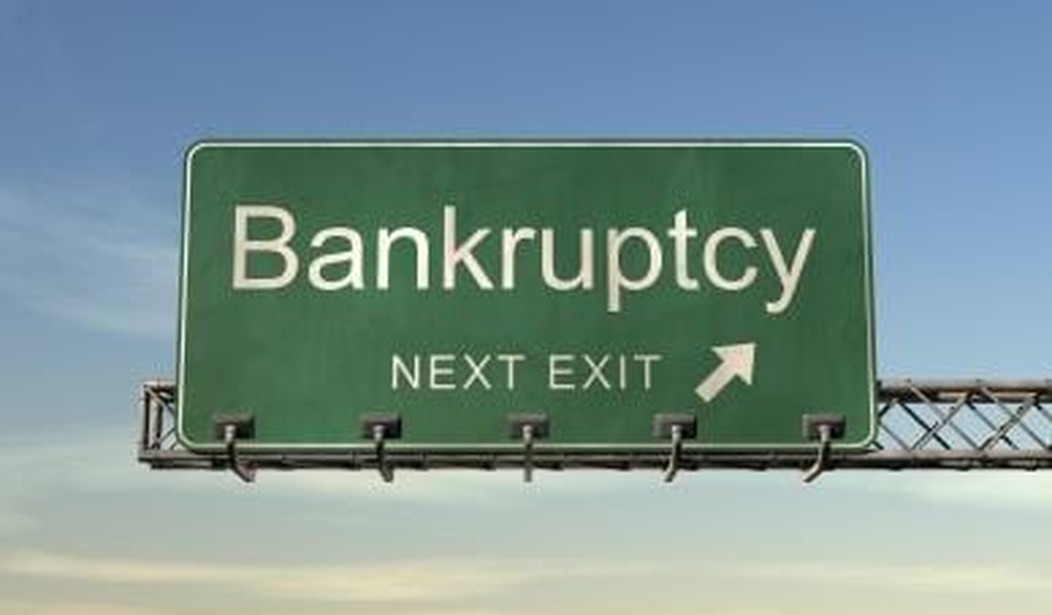WASHINGTON – A top U.S. Federal Reserve official told Congress that banks are likely to cut their reliance on short-term funding markets if they expect bankruptcy and not a government bailout.
Jeffrey Lacker, president of the Federal Reserve Bank of Richmond, told a House Judiciary subcommittee that improving the bankruptcy code would strengthen the financial system by reducing the chance of a government bailout and impose more discipline on financial institutions and their creditors.
“That’s, I think, our best hope for getting out of the ‘too big to fail’ box,” Mr. Lacker said, referring to the problem that large financial institutions may be deemed so important to the economy the government must rescue failing firms to avert a larger economic crisis.
The panel examined whether the bankruptcy code is “best equipped” to deal with the insolvency of financial firms, and whether changes to the code might provide a speedier way for their orderly resolution through bankruptcy.
Lacker said too big to fail consists of two mutually reinforcing expectations.
First, many financial institutions and creditors feel protected by the implicit government backing in the event of financial distress. This has led to the overuse of the riskiest types of borrowing, such as short-term wholesale funding, that could disappear in an instant and leave banks and other companies helpless.
The second of these expectations is that, if a large financial institution is highly dependent on short-term funding, policymakers are often unwilling to let it file for bankruptcy under the U.S. bankruptcy code, fearing that it would spread to other parts of the economy.
This, in turn, leads policymakers to intervene in ways that allow short-term creditors to escape losses.
Short-term funding markets involve lenders, such as pension funds, money-market funds and insurance companies, providing cash or securities on loan to other financial firms who want to use them to trade stocks and bonds. The borrowers can invest the funds or use the securities as leverage for other transactions.
Federal Reserve officials have singled out short-term lending as a funding method that provoked the 2007-2009 financial crisis, and a continuing threat to the U.S. financial system. During the crisis, many short-term lenders lost confidence in financial firms and pulled their money back at the same time, similar to the bank runs that preceded the Great Depression. This created a spiraling effect that instigated a lending crisis that ultimately made it more difficult for businesses to obtain credit, hitting the broader economy.
If bankruptcy becomes the norm, then large financial firms would want to be less dependent on short-term funding, Lacker said.
Policymakers and others have criticized the current bankruptcy code process as ineffective for large financial companies because it takes too long and is focused on the interest of creditors, not financial stability.
The Dodd-Frank law lets federal banking regulators unwind a large failing firm and borrow from the U.S. Treasury to pay creditors or guarantee liabilities.
In a 2013 study, the Richmond Fed found there were $44.5 trillion in total liabilities in the financial system. The bank has estimated that one-third of the financial sector’s liabilities benefit from the implicit protection. Taking into account explicit protection programs, such as deposit insurance, the study found that 57 percent of financial sector liabilities were expected to benefit from government guarantees as of 2011.
According to the Richmond Fed, the proportion of total U.S. financial liabilities covered by the federal financial safety net has increased by 27 percent during the past 12 years.
“Those are very significant financial liabilities to place on the federal government and ultimately on taxpayers. It is a structure that tilts the field towards government intervention and bailout,” Subcommittee Chairman Spencer Bachus (R-Ala.) said.
Dodd-Frank requires financial firms to draw up “living wills,” or plans for how they could go to bankruptcy without government assistance in the event of failure. If regulators find the blueprints inadequate, they can force banks to shrink in size or raise more capital. Banks that are considered unable to go through bankruptcy would be seized by the Federal Deposit Insurance Corp. (FDIC) and resolved using the agency’s new liquidation authority under Dodd-Frank.
The FDIC’s liquidation authority is likely to replicate the two mutually reinforcing expectations that define too big to fail, Lacker said. Forcing banks to fully prepare for a bankruptcy would allow the government to wind down other emergency financing mechanisms, such as its power to lend in “unusual and exigent circumstances.”
Lacker said that the combination of improvements to the bankruptcy code and beefed-up living wills could get regulators to a point where they are “comfortable and confident” should a large financial institution experience financial distress.
“The path towards a stable financial system requires that policymakers have confidence in the unassisted failure of financial firms under the U.S. bankruptcy code and that investors are thereby convinced that unassisted bankruptcy is the norm,” Lacker said. He said it is vital to ensure U.S. bankruptcy laws “are well crafted to apply to large financial institutions.”
Eliminating the government’s ability to provide “ad-hoc” assistance for troubled financial firms would cement its commitment to orderly bankruptcies and contribute to a more stable financial system, he added.
Lawmakers on the panel did not discuss any legislative proposals. But they expressed willingness to consider improvements to the bankruptcy code and reforms to incentivize financial firms to cut back on short-term lending.
Janet Yellen, vice chair of the Fed and President Obama’s nominee for chief of the central bank, has called short-term funding “a major source of unaddressed risk.” During her nomination hearing last month, Yellen noted the Fed was contemplating additional ways to deal with problems of reliance on short-term funding.









Join the conversation as a VIP Member